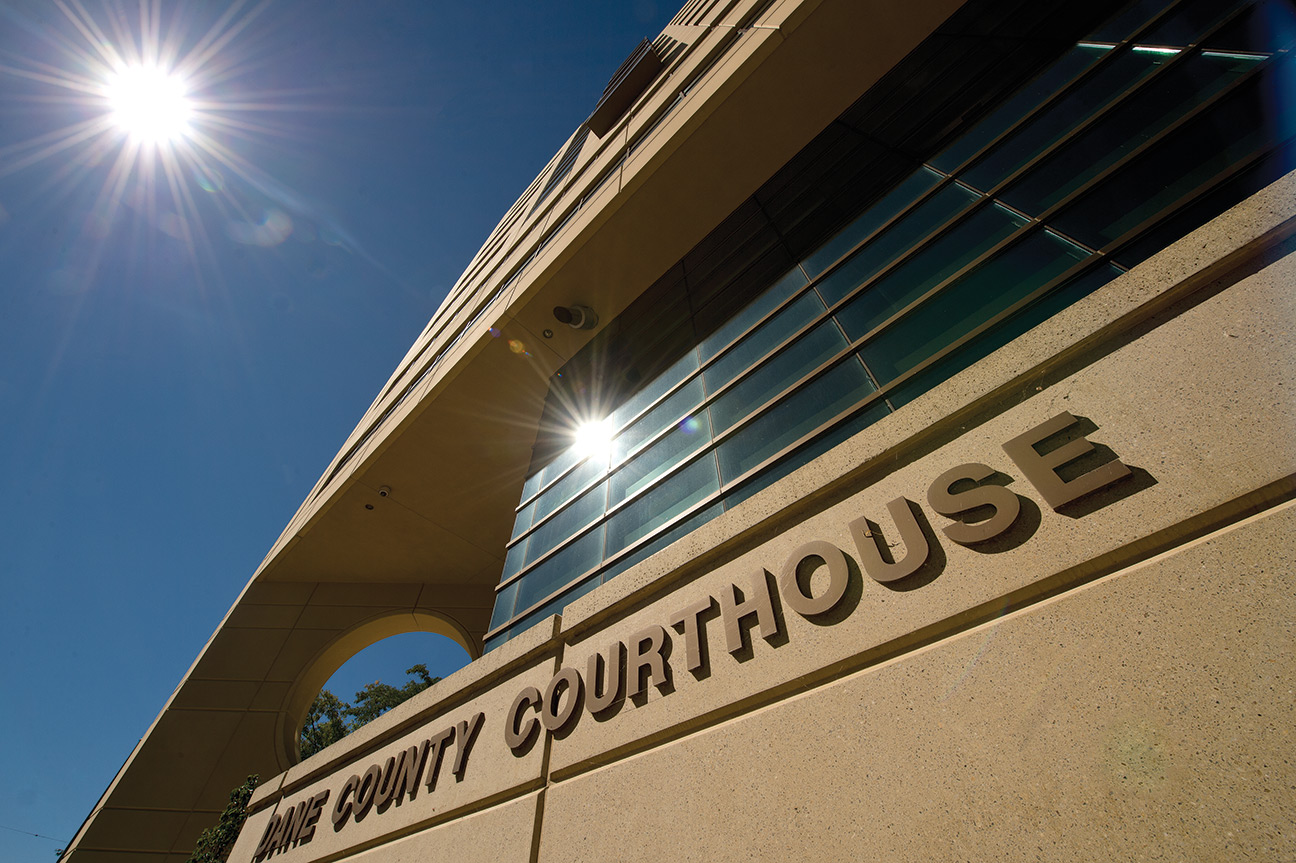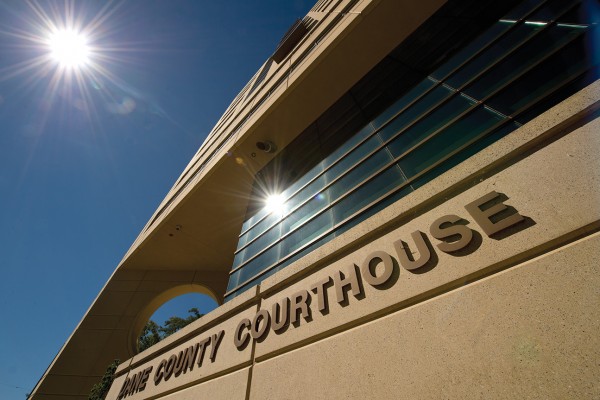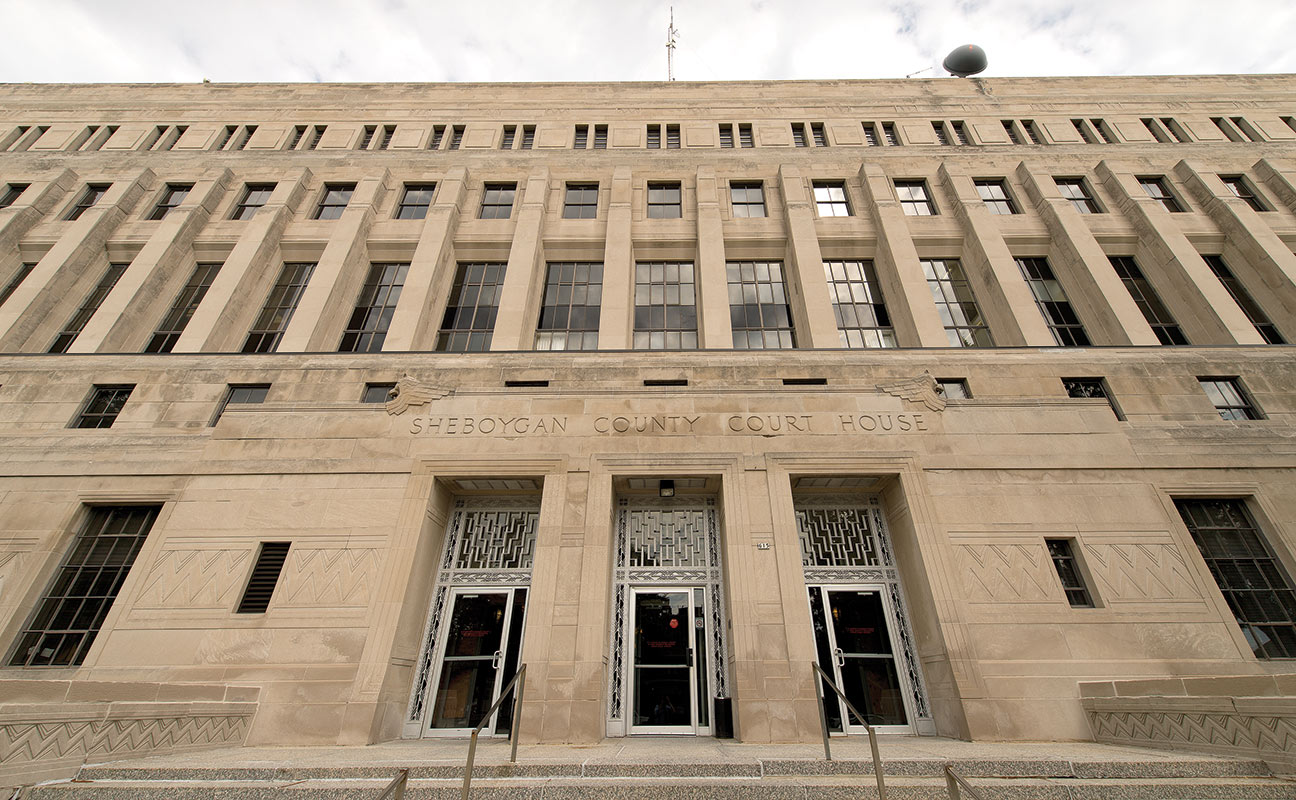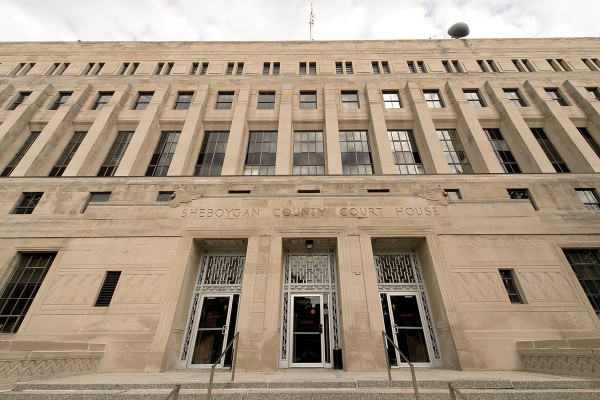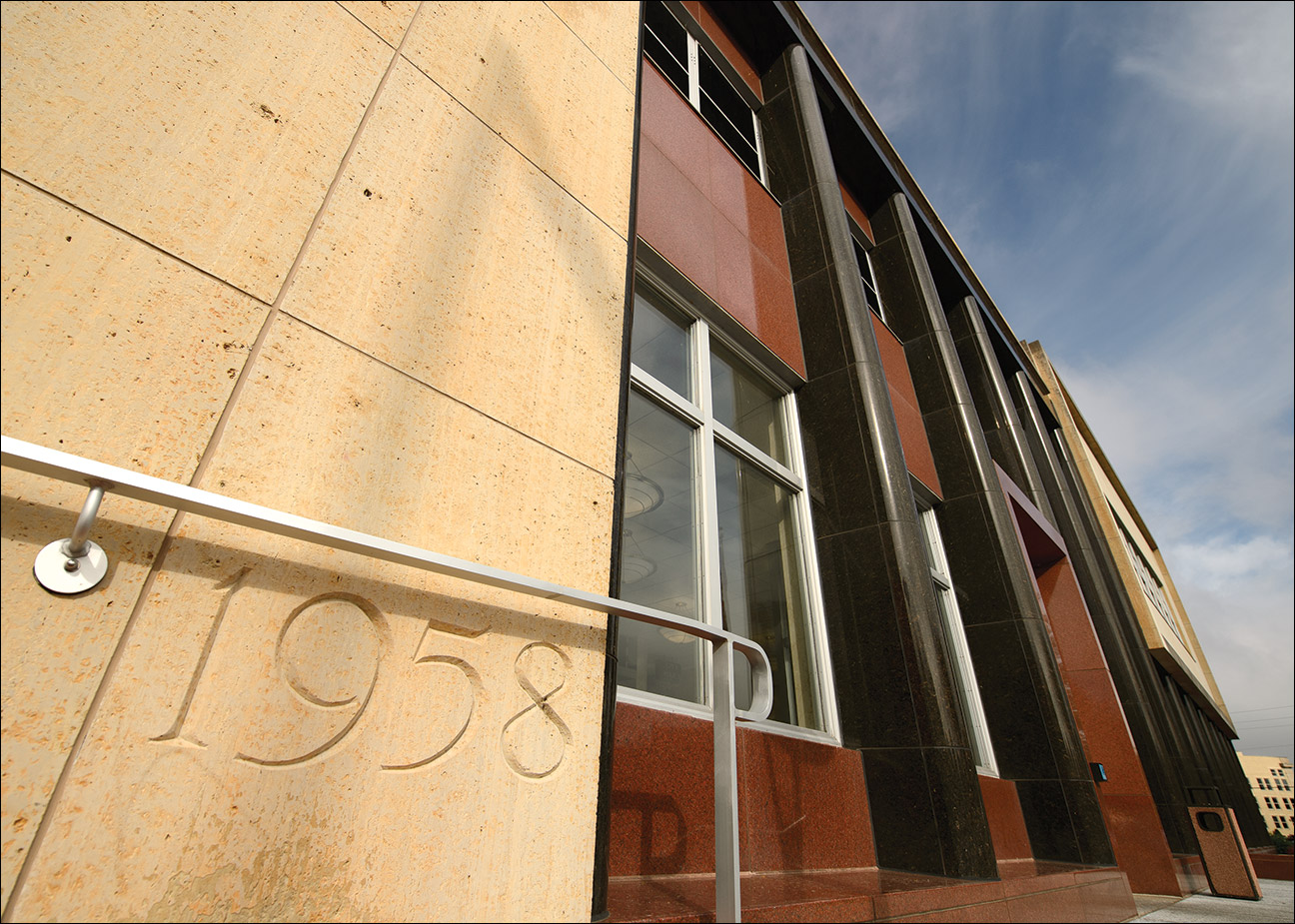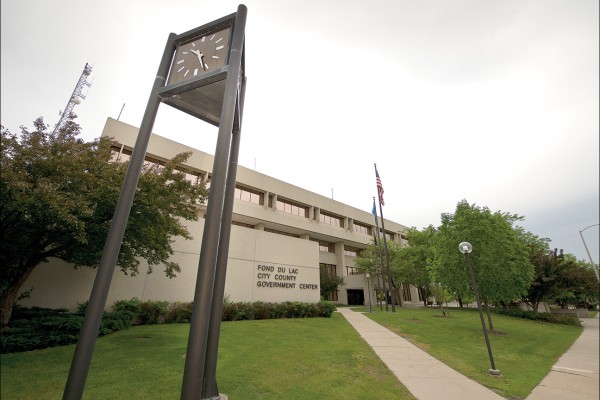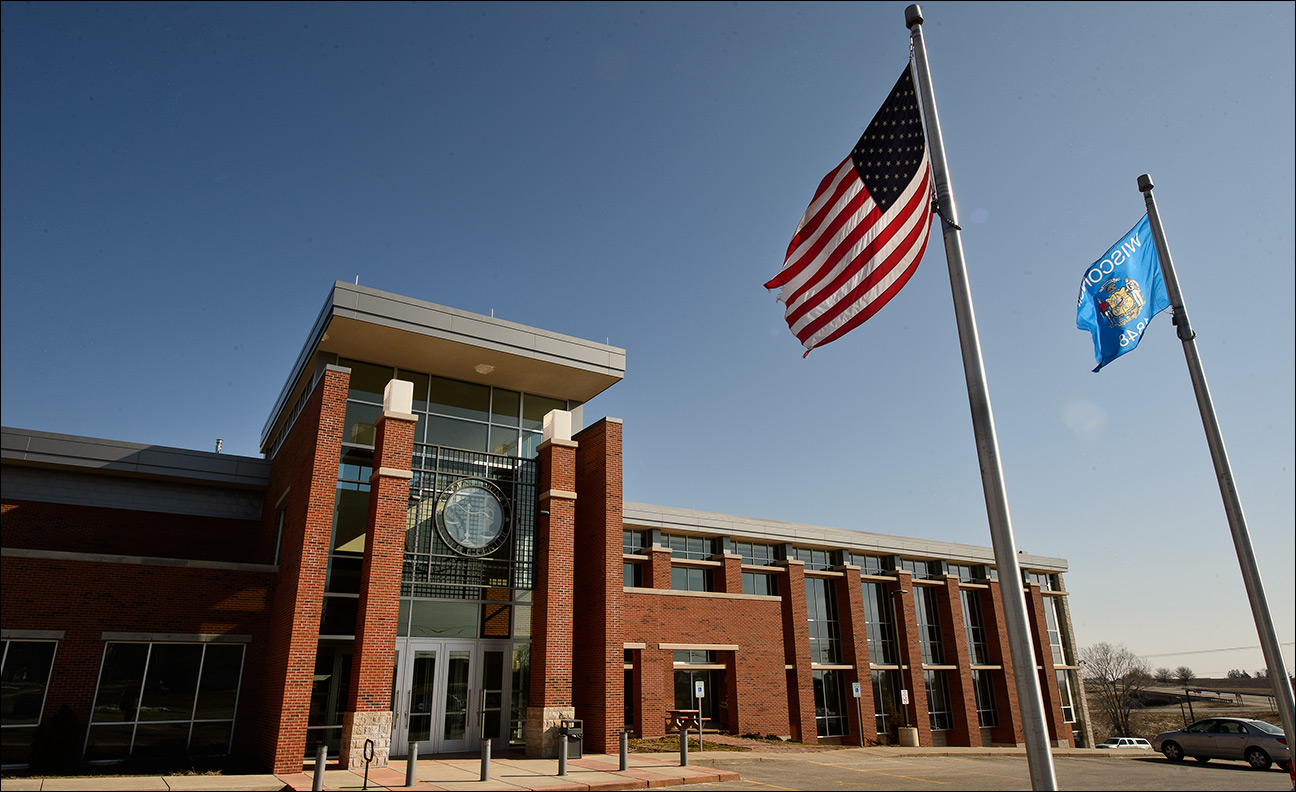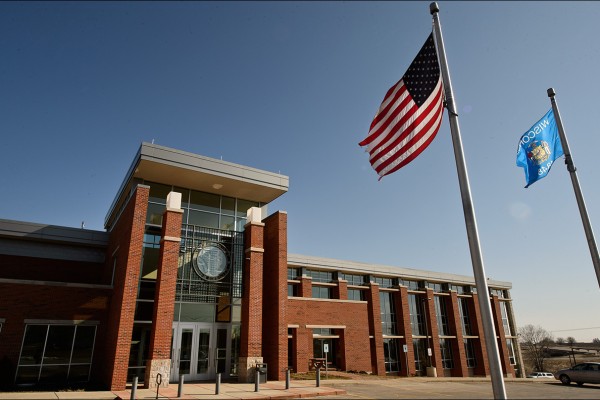Lone judge leads Lafayette County
By: Jack Zemlicka, [email protected]//January 25, 2012//
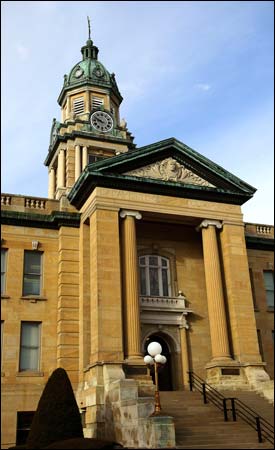
Lafayette County’s lone judge, William Johnston, has a methodical approach to cases that gives attorneys more time to present their argument but requires a strict attention to detail.
Serving a county of about 16,000 residents, Johnston, who took the bench in 1985, isn’t overwhelmed by a calendar as crowded as his counterparts in Milwaukee or Dane counties.
On average, 4,300 cases are filed in Lafayette County each year, the vast majority of which are traffic citations that never see trial.
“In a setting like this,” said Darlington sole practitioner Duane Jorgenson, “there is patience on the part of the court to listen to the nuances and allow lawyers to develop a case.”
In “close call” cases, Jorgenson said, having additional time to build an argument can be the difference between winning and losing. He said that isn’t a luxury afforded in other counties.
But patience, even in a one-judge jurisdition, only goes so far if a lawyer doesn’t know his or her case.
“You had better be prepared,” Jorgensen said. “You can bet your bottom dollar that the judge has read your brief and probably pulled the cases cited and read those as well.”
Johnston, 69, acknowledged his attention to detail, saying he takes his job seriously. One of the challenges, he said, in presiding over complex cases, such as last year’s $64 billion insurance delinquency case involving Ambac Assurance Corp., is dispelling the notion that rural judges are pushovers.
“Being a one-judge court, lawyers might think they are walking into somewhere they have power,” Johnston said. “But I think when they get out here they know what I’m all about and fully expect it to be like any other court.”
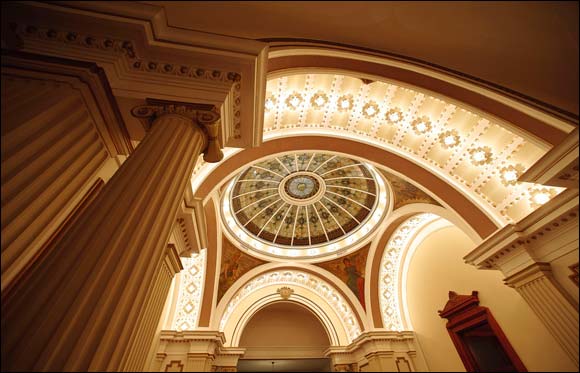
After more than 20 years, Johnston has become the go-to judge for insurance company delinquency cases. Lawyers from New York, Chicago and St. Louis have appeared in his court.
And while he works to ensure that trying cases in his court is akin to doing so anywhere else in the state, visiting the 104-year-old Lafayette County Courthouse is undeniably unique.
In the early 1900s, local attorney Matthew Murphy willed the county $136,556.17 to build the courthouse, which is one of only a handful in the country to be paid for by a single person, said Joe Boll, Lafayette County register of deeds.
Marble walls on the first floor anchor the three-story building, which features a central rotunda with a Tiffany glass dome bordered by four murals. The building was added to the National Register of Historic Places in 1978.
“It’s like a working museum,” Boll said.
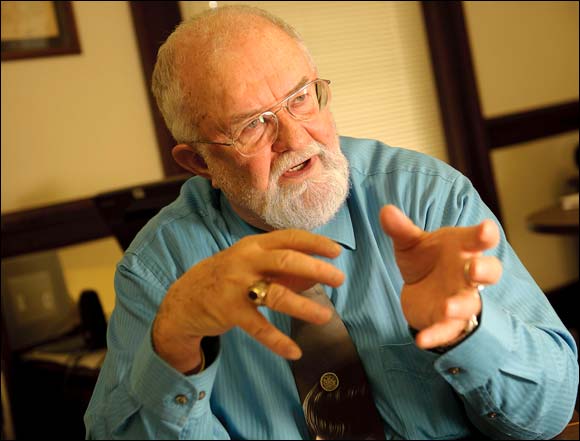
The courthouse has held up well since its opening, he said, and only required minor renovations through the years, including a replacement of the front steps in 1990.
The courthouse also has a tragic history, with the 1985 conviction of Johnston’s predecessor, Judge Daniel McDonald, for the murder of local attorney James Klein.
McDonald killed Klein, Johnston’s law partner, after losing to Johnston in the 1985 spring judicial election. The trial drew a national spotlight on Darlington.
Twenty-eight years later, the courthouse again gained national attention for its selection as a filming locale for “Public Enemies,” a 2009 film focused on the life of John Dillinger.
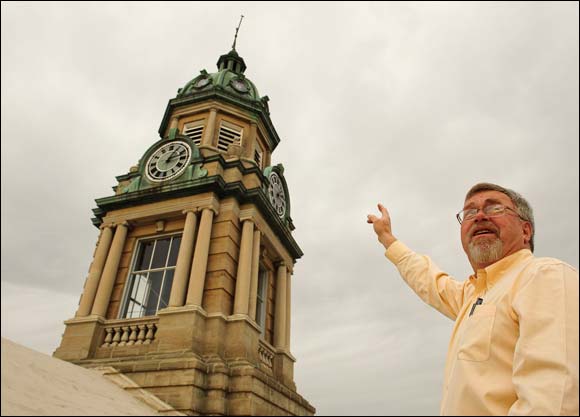
In March 2008, the courthouse received a minor facelift, Hollywood style, when cast and crew of the movie shot several scenes for the film inside the main courtroom. An agreement with county officials stipulated replacement of the courtroom blinds and light fixtures to more accurately reflect the 1930s.
Three days of cases had to be postponed during filming, but Clerk of Court Kitty McGowan said the disruption was minimal and well worth it.
“We got to shake Johnny Depp’s hand,” she said, “which was pretty nice.”
McGowan, Johnston and other elected officials served as unpaid extras in the film and most county offices in the courthouse feature a framed poster of the movie to commemorate the experience.
But even as a judge known for his patience on the bench, Johnston said the arduous filmmaking process tested his tolerance.
“I thought it got to be kind of boring,” he said. “We sat there for eight hours and started reciting the lines, I thought, better than the actor who was playing the attorney.”
Legal News
- Former law enforcement praise state’s response brief in Steven Avery case
- Eric Toney announces re-election bid for Fond du Lac County District Attorney
- Former Wisconsin Democratic Rep. Peter Barca announces new bid for Congress
- Republicans file lawsuit challenging Evers’s partial vetoes to literacy bill
- More human remains believed those of missing woman wash up on Milwaukee Co. beach
- Vice President Harris returning to Wisconsin for third visit this year
- Wisconsin joins Feds, dozens of states to hold airlines accountable for bad behavior
- Trump ahead of Biden in new Marquette poll
- Bankruptcy court approves Milwaukee Marriott Downtown ‘business as usual’ motion
- New Crime Gun Intelligence Center to launch in Chicago
- Arrest warrant proposed for Minocqua Brewing owner who filed Lawsuit against Town of Minocqua
- Wisconsin Supreme Court justices question how much power Legislature should have
WLJ People
- Power 30 Personal Injury Attorneys – Russell Nicolet
- Power 30 Personal Injury Attorneys – Benjamin Nicolet
- Power 30 Personal Injury Attorneys – Dustin T. Woehl
- Power 30 Personal Injury Attorneys – Katherine Metzger
- Power 30 Personal Injury Attorneys – Joseph Ryan
- Power 30 Personal Injury Attorneys – James M. Ryan
- Power 30 Personal Injury Attorneys – Dana Wachs
- Power 30 Personal Injury Attorneys – Mark L. Thomsen
- Power 30 Personal Injury Attorneys – Matthew Lein
- Power 30 Personal Injury Attorneys – Jeffrey A. Pitman
- Power 30 Personal Injury Attorneys – William Pemberton
- Power 30 Personal Injury Attorneys – Howard S. Sicula






